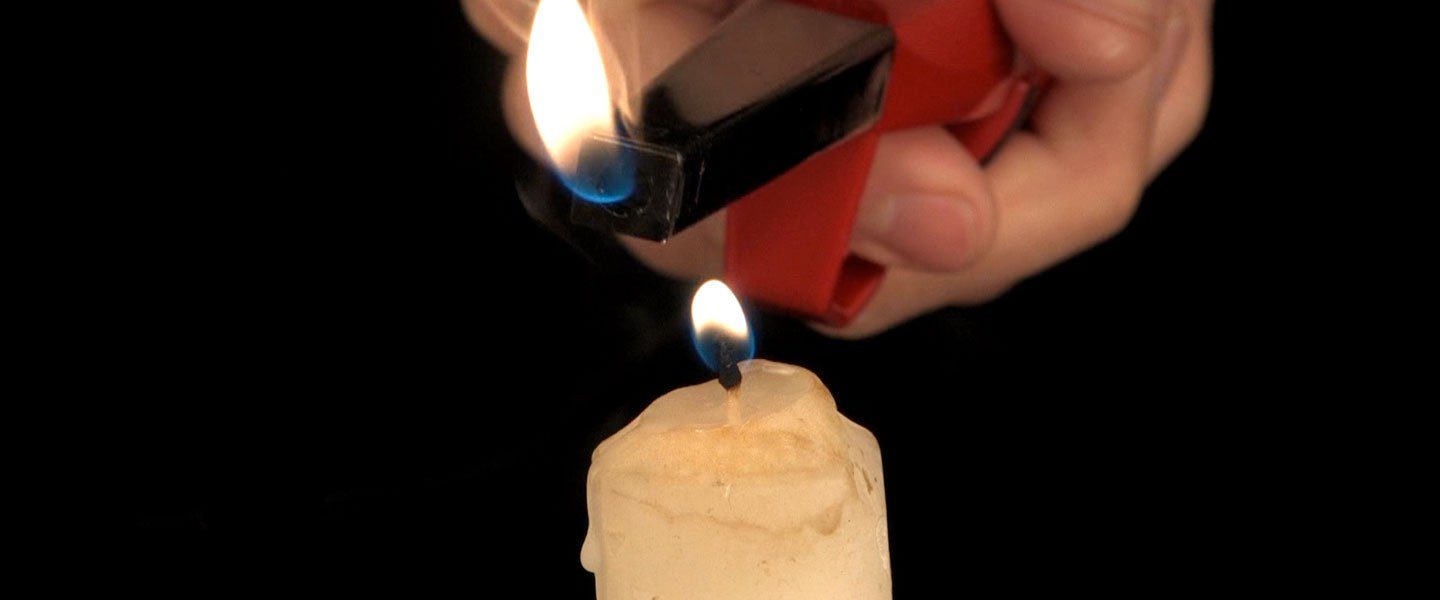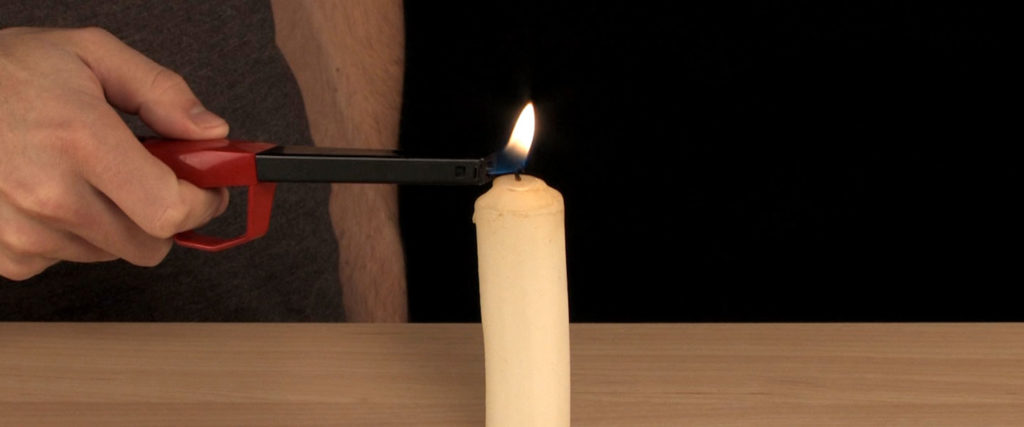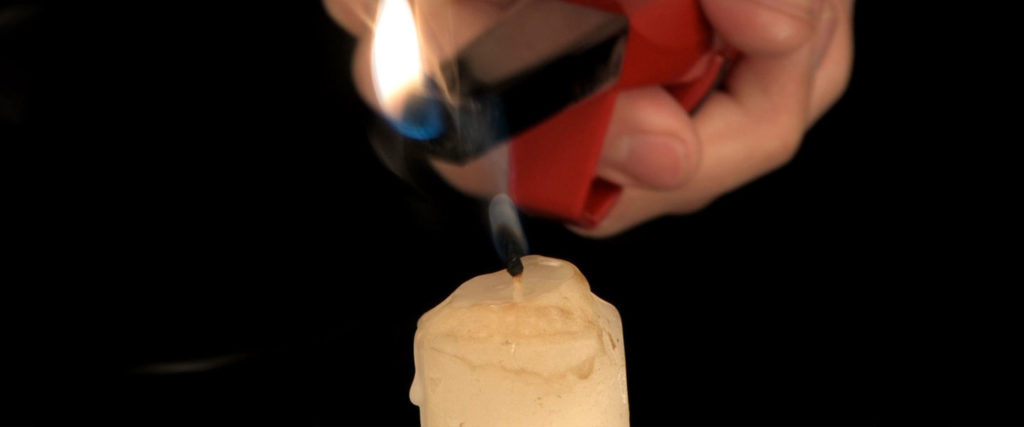Flame Test - Colorful Elements
Blue, orange, and yellow flames are pretty common. What about green or purple flames? When you’re used to the everyday colors of flames, colorful changes […]

You may think it’s impossible or that we have completely lost it, but we are going to show you a simple trick that will surprise anyone who sees it. You can relight a candle without touching the flame to the wick – only the smoke needs to be touched by the flame. It may seem ludicrous to you, but it really works.

It helps if the air in the room is very still and quiet before you light the candle.

Blow out the candle with a short puff of air. Wait a couple of seconds for the smoke trail to rise from the wick of the candle.
Hold the lighter near the smoke trail coming from the wick and place the flame in the smoke. You can be close to the wick, but don’t let the flame touch the wick. It’s not necessary anyway! A blue flame travels along the trail to the wick and the candle glows once again.
When you light a candle, a lot happens! Heat melts wax close to the wick and the melted wax flows up the wick by capillary action of the wick material. The wax is vaporized (becomes a hot gas) and its hydrocarbons break down into into hydrogen (H) and carbon (C). The now gaseous wax burns in oxygen (O) to produce water vapor, carbon dioxide, heat, and light. The “smoke” from a candle is a very complex material. You probably know it contains a substance called “soot” which is a black material composed mostly of carbon that comes from burning organic items. (You can see soot on surfaces near or over candles and at the top of glass coverings around them.) It’s interesting to note that the yellow flame you see on a candle is comprised mainly of burning soot. What you don’t see is the blue flame surrounding it in which the temperature can be around 2,500°F (1400°C ).
Another component of the smoke from a candle is unburned wax vapor. This is the material that causes candle wax to appear white or gray. For a few seconds, its temperature is high enough that it will combust (burn) with the touch of a flame. It rises, of course, because it’s hot so you will probably need to be above the wick to light it. The smoke trail is very straight when they air is still and you can touch the flame to any part of the trail that’s connected to the wick. The wax vapor reignites and the blue flame travels along it to the wick where the candle burning process starts all over.
You could test a few variables using this simple candle set up. However, keep in mind that candles involve a lot of variables. Every part of a candle can change the way one candle burns and glows compared to another. Candles made by different manufacturers will contain different wax types, wick designs, various pigments, aromas, etc. A good way to ease the confusion is to use matching sizes and styles of candles from one manufacturer.